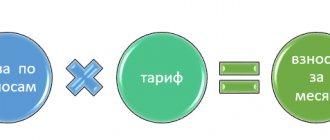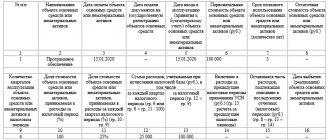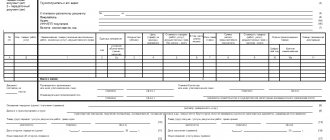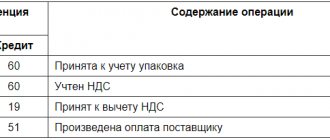Contribution in cash from the founder (concept and forms)
First, let’s figure out what is meant by a founder’s contribution and on what grounds it is possible.
It is clear that any operation to receive money to a legal entity must be justified, since finances cannot simply appear in an organization. In this regard, the contribution is understood as:
- Contribution to the authorized capital of the company (both during creation and when increasing its size).
- Investment in company property.
- Free assistance (under an appropriate agreement or interest-free loan).
- Payment of contractual obligations (for example, remuneration for work, services, etc.).
- Depositing funds from an accountable person, etc.
In this article, we will study in detail the first 3 options, since they are associated with improving the financial situation of the company and for this reason are used more often than others. In addition, we will further tell you how to arrange a founder’s contribution to a current account, transferred in various ways and on various grounds.
How to correctly register the founder's contribution to the cash desk
When a company is created, an authorized capital is formed; it can be its own or borrowed. Authorized capital (hereinafter referred to as the Criminal Code) is a reserve of a company that is created by the founders by contributing to it cash, material assets, property, and intangible rights expressed in monetary terms.
It is necessary for the company to start functioning. Legislative acts of the Russian Federation regulate the amount (size) of the authorized capital.
Let's look in this article at which account the authorized capital is accounted for, how to register the founder's contribution to the cash desk, and let's look at the accounting entries when registering this operation.
Payment or increase in the authorized capital of an organization - general provisions
This procedure is regulated by:
- Art. 66.1, 66.2 of the Civil Code of the Russian Federation (hereinafter referred to as the Civil Code of the Russian Federation);
- Art. 15–19 of the Law “On Limited Liability Companies” dated 02/08/1998 No. 14-FZ (hereinafter referred to as Law No. 14-FZ).
According to the above rules, money, things or property rights can be transferred as payment for the authorized capital. Restrictions are permissible only on the basis of law or charter. In this case, the minimum amount of the authorized capital must be paid in cash (Clause 2 of Article 66.2 of the Civil Code of the Russian Federation).
The payment period is established by the agreement on establishment (decision of the sole founder), however this period should not exceed 4 months from the date of registration of the LLC when creating the company. If we are talking about an increase in capital, then it is paid within 2 months from the date of adoption of the corresponding decision (although the charter or decision may provide otherwise).
This method of financing is beneficial to the enterprise, because the contributed property is not subject to taxes, according to clause 3 of Art. 251 of the Tax Code of the Russian Federation (hereinafter referred to as the Tax Code of the Russian Federation).
Founders' contributions: lawyer's answers to clients' questions
Home — Useful information — Founders’ contributions: lawyer’s answers to clients’ questionsClients often ask how founders can best transfer funds to the accounts of their organizations. Specialists from Legal LLC have prepared useful legal information on the most pressing issues related to founders’ contributions.
What is the founder's contribution and for what purposes is it transferred?
The legal features of the transfer of financial contributions by the founders are regulated by Art. 248, 250 and 251 of the Tax Code of the Russian Federation. This procedure represents free assistance from the founder of the organization. As a rule, money is deposited into the bank account of a legal entity. The purposes of the transfers are to compensate for the lack of financial resources of the organization, replenish the company’s accounts to perform various operations, etc.
What is the best way to arrange a founder's contribution?
The law provides for 3 ways to register founders’ contributions, each of which has its own legal characteristics.
1. Loan agreement. The procedure for its registration is regulated by Art. 807 of the Civil Code of the Russian Federation. In accordance with the provisions of this article, a loan agreement represents a transfer of financial assets on debt. From the moment this transaction is completed, the company that is the recipient of the loan becomes a debtor. Accounts payable will remain with the organization until it repays the debt. To do this, you will need to transfer a sum of money in the amount of the loan to the lender’s current account.
2. Free assistance. This is a transfer of money to an organization’s account as financial assistance without the recipient’s obligation to return the money or provide other property, perform work or provide services. The procedure is regulated by the provisions of Art. 248, 250 and 251 of the Tax Code. It should be remembered that if the founder’s share in the authorized capital of the organization is 50% or less, the gratuitous contribution transferred by him will be recognized as non-operating income. This must be taken into account when paying taxes. The date of receipt of income will be the day the funds are received in the account or cash register of the recipient of the contribution. If the founder’s share is more than 50%, then in accordance with the provisions of Art. 251 of the Tax Code, non-operating income is not taken into account.
3. Increase in authorized capital. This procedure is carried out in the following order:
- holding a general meeting. A majority of at least 2/3 of the company's participants must vote for an increase in the authorized capital. The charter may provide for a larger number of votes to make such decisions. If the decision is positive, the nominal value of the shares of each participant in the company increases. The size of the shares remains the same;
- Submitting an application and a package of documents to the Federal Tax Service to increase the authorized capital. These changes come into force from the date of registration in the Unified State Register of Legal Entities.
How many times can a founder make contributions?
The founder has the right to deposit money and other property into the company account an unlimited number of times.
What is the maximum one-time contribution amount?
The law does not provide restrictions on the amount of a one-time contribution from the founder.
What is the maximum amount of all contributions made by the founder?
There are no restrictions on the amount of all founder contributions.
Do I need to pay taxes on founders' contributions?
The taxation of founders' contributions depends on the method of their transfer.
1. In accordance with the provisions of Art. 251 of the Tax Code of Russia, property transferred as gratuitous assistance to companies is not subject to tax under the following conditions:
- the contribution is made on behalf of an individual whose share in the authorized capital of this company is more than 50%;
- property (except for financial assets) received by the organization as a contribution is not transferred to other persons during the year.
2. According to the provisions of paragraphs. 15 clause 3. art. 149 of the Tax Code of the Russian Federation, funds and interest received on loan transactions are not subject to taxes.
3. An increase in the authorized capital is not subject to taxes, since it is not a profit of the organization. This is stated in Art. 217 Tax Code (clause 19). Income received by participants (shareholders) of companies as a result of the revaluation of fixed assets in the form of the difference between the new and initial value of their share in the authorized capital (shares) or in the form of additional shares, units or shares received by them is not subject to taxes.
This position is also confirmed by the following characteristics of operations to increase the authorized capital:
- there is no fact of sale of property;
- This action does not apply to any of the cases subject to personal income tax. An increase in the authorized capital is not recognized as a material benefit, payment in kind or transaction with securities.
- there is no fact of transfer of ownership. The founders actually do not receive new property. In addition, upon leaving the company, each founder has the right by law to receive a part of the net assets, which corresponds to his share.
Furthermore, in accordance with Art. 270 of the Tax Code of Russia, for tax purposes, contributions to the authorized capital are not subject to accounting as expenses.
How is additional capital generated from the founder’s contribution?
How property is transferred to cover the authorized capital is described in detail in the corresponding article on our resource. In this publication, we will examine only the monetary form of repayment of the authorized capital.
There are several payment methods:
You can find more complete information on the topic in ConsultantPlus. Free trial access to the system for 2 days.
- Depositing funds into a savings account, which is opened by one of the founders in the name of the organization being created.
- Contribution of the founder to the current account in cash (for an already registered company).
- Payment through the company's cash desk. In this case, it is necessary to correctly fill out the cash receipt order, i.e. indicate the amount, payer and purpose of payment (payment of a share of the authorized capital of the LLC).
- Transfer of funds to one founder specified in the agreement on establishment as the person responsible for the formation of the authorized capital. When using this option, the transferor must require a corresponding receipt from the recipient.
Payment of the authorized capital by several founders is formalized in separate documents for each of them (within the limits of only its share).
The authorized capital has been formed and declared - what posting is necessary?
Commercial legal entities (PJSC, JSC, LLC, business partnerships, state unitary enterprises, municipal unitary enterprises) are created with the mandatory formation of an authorized capital (MC).
The size of the management company, the share of participation in it of each of the founders, payment terms, form of contributions and assessment of non-monetary contributions are stipulated in the constituent agreement. The authorized capital is the starting amount of funds with which a legal entity begins its activities. After completion of all activities for making contributions to the authorized capital, postings begin with the corresponding entry made on the date of its registration. It should reflect the accrual of the full amount of the capital provided for by the charter, in correspondence with the debt of the founders on contributions to it: Dt 75 - Kt 80.
Analytics on account 80 (accounting capital account) is organized according to:
- founders (participants);
- stages of formation (in PJSC, JSC and business partnerships);
- types of shares (in PJSC and JSC).
Account 75 is the account for settlements with the founders. The debit balance of its subaccount, reserved for settlements of contributions to the capital account, will show the amount of the unpaid capital account.
For information on how the capital account will be reflected in accounting, read the article “Procedure for drawing up a balance sheet (example)” .
ConsultantPlus experts explained in detail how the authorized capital is paid. If you have an LLC, this Ready Solution will help you. If AO, this material is for you. If you do not have access to the K+ legal reference system, get a trial demo access for a while. It's free.
Contribution to the company's property
If participants decide to provide free and irrevocable assistance to the company, then contributing to the company’s property is the most appropriate way. The event is regulated by Art. 27 of Law No. 14-FZ and is subject to the principles below:
- Possible only if this is provided for by the organization's charter.
- Contributions are made by all participants in proportion to their shares (a different procedure may be prescribed by the constituent document).
- As a general rule, contributions are accepted in the form of money.
- As a result, the size of the shares does not change at all.
When filling out payment documents for a contribution of money to the current account from the founder, it is mandatory to indicate the exact amount so that disputes do not arise later.
If we talk about tax consequences, then for the receiving party such an investment is not a profit (subclause 11, clause 1, article 251 of the Tax Code of the Russian Federation), if it is carried out by the founder with a participation share of at least 50%, therefore it is not subject to taxes. The taxation of the investing person has some nuances only for VAT.
Free financial assistance: accounting entries
Depending on the branch of legal regulation that controls the process of gratuitous transfer of assets, the meaning of the definition of “financial assistance” changes. The Civil Code considers it in the form of a transfer of property by third parties or founders as a gift.
Also read: How to submit an application to the tax authorities for a pensioner’s tax benefit via the Internet
As the allocated funds are used, the amounts are recognized as non-operating income, partially written off to account 91.1. This is necessary according to PBU: assets received free of charge as a result of charity are considered non-operating income and must be reflected in account 91. A decrease in the amount of assistance received occurs when:
Interest-free loan
If a participant wants to sponsor an enterprise, but plans to get his money back, an interest-free loan agreement is concluded between the founder and the company.
IMPORTANT! The loan agreement begins to operate from the moment of actual transfer of money. For cash payments, the supporting document will be a cash receipt from the company. For non-cash transfers - an entry in an online bank or an order for a transfer without opening a bank account.
It will subsequently be possible to prove the loan relationship only if it is clearly indicated in the listed payment documents that the money is transferred under a loan agreement.
This payment is beneficial from a tax point of view for both parties:
- borrowed money does not bring any profit to the enterprise; moreover, sub. 15 clause 3 art. 149 of the Tax Code of the Russian Federation directly states that the loan is exempt from taxation;
- An interest-free loan of money also does not promise income to the borrower.
Financial assistance provided by the founder free of charge
If we approach the issue of correctly registering a contribution to an organization’s current account, then banks do not care how the amount deposited will be used in the purpose of payment. In this regard, abstract formulations such as “financial assistance”, “gratuitous investment in property”, etc. can often be found in primary documents. However, incorrect display of this indicator can cause a number of problems - for example, with display in accounting entries, taxation, future fate payment.
Let's look at this phenomenon and designate it as free financial assistance. It involves the transfer of funds without return, but bypassing the rules for making a contribution to property. However, such a maneuver, as with a contribution to property, is beneficial if it is carried out by the founder with a participation share of at least 50%, since this, according to clause 11 of Art. 251 of the Tax Code of the Russian Federation, not taxed. Otherwise, the company will have to pay income tax on the amount received.
Subscribe to our newsletter
Yandex.Zen VKontakte Telegram
The legislator does not limit the number of agreements under which the founder’s contribution to the current account is made free of charge, nor their amounts. However, it is worth considering that multiple receipts of finance through such a transaction may arouse the suspicion of counterparties and interested authorities (code 1195 of the Recommendations for developing criteria for identifying and identifying signs of unusual transactions, approved by order of Rosfinmonitoring dated 05/08/2009 No. 103).
Postings when receiving gratuitous financial assistance from the founder
Situation: There are three founders in the Krona company, the shares are divided equally between them. Founder No. 3 transferred on June 12, 2020. to the Company's account gratuitous assistance for payment of wages in the amount of 1.5 million rubles. "Krona" 06/15/2020 paid employees salaries in the amount of 1.305 million rubles, paid personal income tax in the amount of 0.195 million rubles.
To document business transactions, it is necessary to draw up a decision of the founder (minutes of the general meeting), which indicates the amount of financial assistance, the transferred property (if the assistance is not monetary) and its purpose. If this condition is met, tax risks are reduced to zero.
The procedure for receiving money from the founder to the savings account
In this and the next parts of the publication, we will directly analyze the procedure for receipt of the founder’s contribution to the current account and savings account. In particular, if the organizers of the enterprise decided that payment of the authorized capital is carried out before the state registration of the company, it is necessary to open a savings account in the name of the future legal entity (this is done by one of the founders).
Unlike a classic current account, the creation of a savings account is not regulated in any way by the Central Bank of Russia, therefore the procedure is carried out in each credit institution in its own way (clause 15 of the regulation, approved by the Bank of Russia on February 27, 2017 No. 579-P).
As a rule, to open a savings account you need:
- passport of the founder, who is authorized to perform these actions by the general meeting;
- charter of the future society;
- minutes of the general meeting on the creation of the LLC.
The account is opened on the same balance as the future settlement balance, so the money is not spent anywhere and over time flows into the account of the registered enterprise. Otherwise, they are returned to the opener.
As mentioned above, when transferring finances to a third party to pay for the authorized capital, you should obtain his receipt. Even if the procedure is specified in the establishment agreement, only this can confirm the reality of the delivery of funds.
Cash contribution to the current account from the founder
Please note that cash can only be deposited into your current account. The bank will not credit money to the accounts of other companies. Moreover, finances in such a situation are contributed according to certain rules.
A money transfer from a citizen without opening a bank account is made in the following order:
- Funds are accepted according to a cash receipt order, a copy of which is issued to the payer.
- Based on the order (the form is developed in each bank independently), the transfer is carried out.
An announcement for a cash contribution from a company assumes the following algorithm:
- The representative of the enterprise is issued funds at the cash desk according to an expense cash order.
- He deposits them in the bank according to an advertisement.
- After the document is processed by the operator, the client goes to the cash desk, deposits cash and receives a signed and stamped receipt from the cashier.
Formation of authorized capital in 1C 8
- Contribution of fixed assets. For example, the founder decided to repay the debt on the authorized capital in the form of equipment that can be immediately put into operation. In this case, two entries will be generated: Dt 08 – Kt 75.01 (repayment of debt on the authorized capital);
- Dt 01 – Kt 08 (commissioning of equipment).
More to read: When What. Ummah Confiscate Car
Please note that if the debt on the authorized capital is repaid not in money, an assessment of this property must be carried out. The founders have the right to produce it themselves if the cost does not exceed 20,000 rubles. Otherwise, an external appraiser must be involved.
Special cases for cash payments
If the situations described above are standard for making a contribution from the founder to the current account of an organization in cash, then those presented below go beyond the general rules.
Depositing money by a third party
Sometimes the founder is not able to personally transfer the amount. In this case, you can entrust this to another person. To ensure that the transfer of funds is not interpreted as a deposit of money by a company employee into its account, it is necessary to issue an order in any way indicating the amount and purpose of payment. A receipt is best suited for this.
Accepting cash from a legal entity via an ATM
What is normal for citizens seems unusual in the case of companies. However, credit institutions have long met their clients halfway and installed terminals for legal entities in their own settlement institutions, thanks to which they can now quickly credit funds to the settlement accounts of other companies. The only condition is that these accounts must be opened in banks that operate a similar program.
To carry out an operation through the terminal you must:
- Obtain the depositor's identification code (ID) from the banking organization.
- On the self-service terminal, in the service category, find the section on depositing cash into your current account.
- Enter the received code and then follow the instructions.
What entries to make for the operation “Financial assistance to the founder” in 1C
In the “Amount” column, manually write the amount of financial assistance. This indicator will automatically be reflected in the “Transaction Amount” column. Under the transaction amount, manually fill in “Contents” - free assistance from the manager. Next, after filling out, in the upper left corner of the window there is a “Record and close” button. One wiring done. If you now open the “Journal of manually entered transactions”, the new document should appear in the list with the corresponding number.
In modern conditions, even successful organizations need to have additional funds in their current account. Loans are not always a good solution. Russian legislation allows assistance to be provided free of charge in unlimited quantities. So financial assistance from the founder is common. Financial assistance from the founder can be in two options:
29 Jun 2021 stopurist 672
Share this post
- Related Posts
- What taxes do pensioners not have to pay?
- Transition to USN application deadlines 2020
- Do Chernobyl victims pay transport taxes?
- What Payments Can Pensioners of the City of Plavsk and Chernobyl Avarri Rely on?
How to make a founder's contribution to a current account non-cash?
Cashless payments between counterparties, regardless of their status, are a common payment method. Transferring funds from the founders is no different from ordinary banking transactions. The only point that we constantly mention is that the purpose of payment must be correctly filled out in all payment documents. Cashless payment transactions are carried out as follows:
- if the participant is a legal entity, then the money is processed according to completed payment, collection orders and other forms;
- For an individual, this method is possible using any services for managing electronic money (here it is also necessary to clearly state the purpose of the money transfer in the form).







